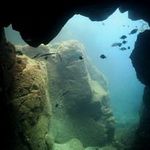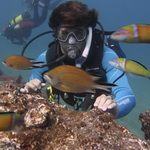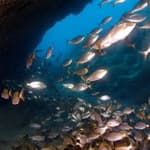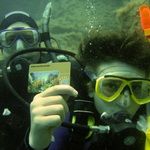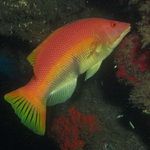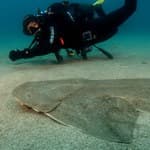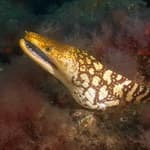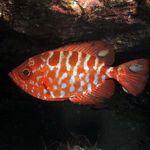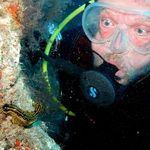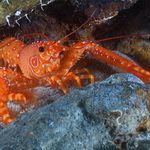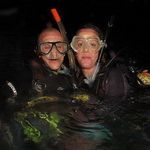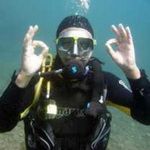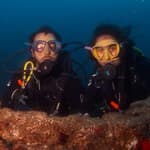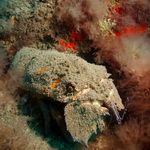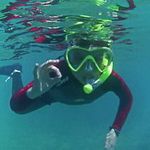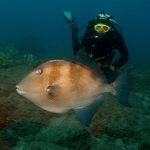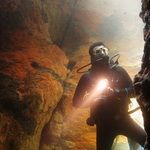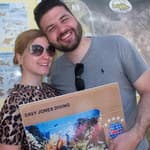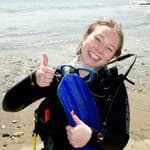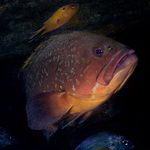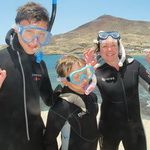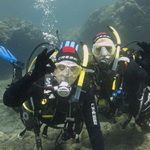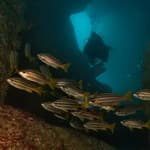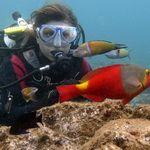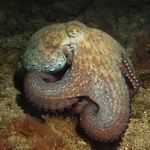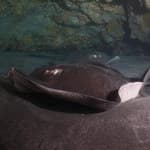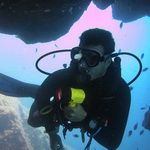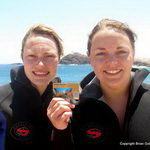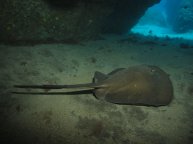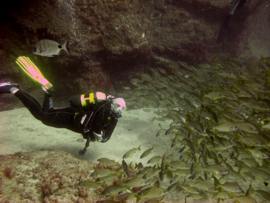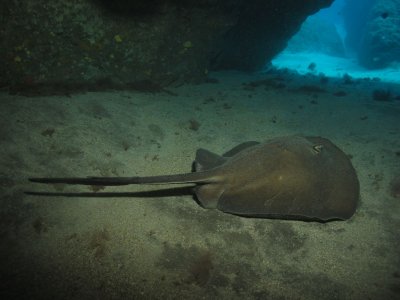Diving with Endangered Species in Gran Canaria
Sadly, marine environments are under threat. For years, overfishing, careless disposal of bycatches, pollution and relentless pressure on Marine Environments and breeding habitats has led to a decline in many Marine Species. We have compared the main species found in the Canaries to the 'Listado de Especies Silvestres en Régimen de Protección Especial y Catálogo Español de Especies Amenazadas'(Spanish National list of protected species) and IUCN 'Red List of threatened Specias', and the result is nine endangered species which, if you are lucky, you can see while diving in the Canary Islands, especially in the Marine Reserve in Arinaga.
The Red List has several categories, and based on published materials we have correlated lists of species seen in the Canaries with the different categories, to give you an idea of the threatened species you could see on you Gran Canaria Diving excursions.
In addition, the Canarian Government has issued a list of species which it believes are in danger, which covers birds, animals, plants and marine species. Sadly for marine species it has relatively few of the species flagged by the Red List, but we believe that future revisions will be more comprehensive in their cover. The National Spanish list is however no more in line with the Red List.
Critically Endangered Species
| Common Name | Scientific Name | Encounters | Status |
| Monk Seal | Monachus monachus | No- now extinct in Canaries | Critically Endangered |
| Angel Shark | Squatina squatina | Yes - frequent | Critically Endangered and Listado de Especies Silvestres en Régimen de Protección Especial |
| Giant Devil Ray | Mobula mobular | Yes - in selected dive sites and times | Endangered - Listado de Especies Silvestres en Régimen de Protección Especial |
| Dusky Grouper | Epinephelus marginatus | Yes - frequent | Endangered |
| Island Grouper | Mycteroperca fusca | Yes - Almost Daily | Endangered |
| Loggerhead Turtle | Caretta caretta | Yes but infrequently | Vulnerable -Listado de Especies Silvestres en Régimen de Protección Especial |
| Green Turtle | Chelonia mydas | never seen | Vulnerable - Listado de Especies Silvestres en Régimen de Protección Especial |
| Butterfly Ray | Gymnura altavela | Yes - infrequent | Listado de Especies Silvestres en Régimen de Protección Especial |
| Seahorse | Hippocampus hippocampus | Yes - infrequent | Listado de Especies Silvestres en Régimen de Protección Especial |
| Spiny Pufferfish | Yes - frequent | Vulnerable - Listado de Especies Silvestres en Régimen de Protección Especial |
Angel sharks
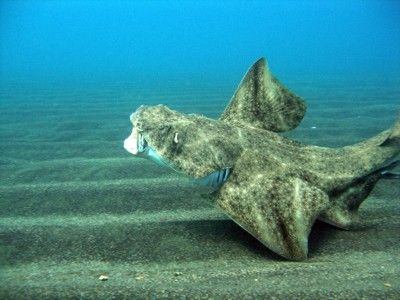
| Name | Angel Shark : (squatina squatina) |
| Status | CRITICALLY ENDANGERED |
| Habitat | lives on sandy bottoms |
| Threats | Biggest threat is being taken as by-catch from trawling, but the very slow reproductive cycle means that it is not recovering and is classed as extinct in the North Sea |
| Encounters | In the Canaries, where bottom trawling is less common, the species is surviving and can be found almost daily. Some sites have distinct seasonality In Arinaga, the best times to see them are from late November to the end of July, when they can be seen almost daily as individuals. Multiple sightings are unusual. It is more active at night so are often seen during night dives. |
|
IUCN reference pageThe IUCN Red List of Threatened Species. Version
2014.3. www.iucnredlist.org Downloaded on
14 May 2015. Listado de Especies Silvestres en Régimen de Protección Especial en España Spanish national list of protected species. |
The angel shark is most often encountered asleep or resting in the sand. They cover themselves with a thin layer and wait for their favourite food (Bogas boops boops) to come to them. They are not aggressive towards divers unless disturbed and will generally avoid contact with divers. They prefer the sand to the rocky outcrops and can grow up to 1.5m long. We have been studying these amazing creatures for several years and we have a separate page devoted to Angel Sharks and the results from the surveys we carried out in conjunction with the University of Las Palmas
Giant Devil Ray
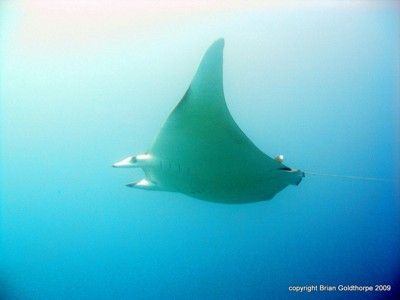
| Name | Giant Devil Ray: (Mobula mobular) |
| Status | Endangered |
| Habitat | Sandy open areas with plenty of room. They feed mainly on plankton and small crustaceons and small fish. |
| Threats | Fishing by-catch and loss of their food chain |
| Encounters | Manta rays can be seen very infrequently but almost anywhere around Gran Canaria by divers, but the one place where they are regularly seen is in the north near Sardina del Norte. In late summer and early autumn they tend to come in to feed around evening time, and then they form a magnificent sight as the soundlessly glide past, over and round divers as they chase the plankton in the sea at that time of year. |
| IUCN reference pageThe IUCN Red List of Threatened Species. Version 2014.3. www.iucnredlist.org Downloaded on 14 May 2015. |
Dusky Grouper
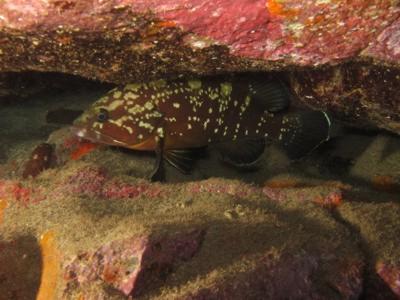
| Name | Dusky Grouper :(Epinephelus marginatus) |
| Status | Endangered |
| Habitat | Rocky shorelines with sandy botttoms |
| Threats | Fishing, both commercial and recreational, especially spear fishing |
| Encounters | Some individuals in protected areas grow very large and become rather amiable towards divers. Some areas such as El Hierro have redidents who enjoy being photographed, but in other areas predatory fishing has removed the biggest examples from the local environment. In the last couple of years numbers have been improving in Arinaga and it is quite common to find them hiding under big boulders now if you know where to look. |
| IUCN reference pageThe IUCN Red List of Threatened Species. Version 2014.3. www.iucnredlist.org Downloaded on 14 May 2015. |
Island Grouper
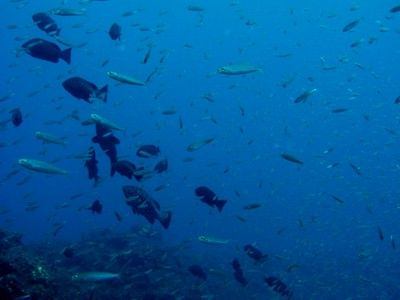
| Name | Island Grouper :(Mycteroperca fusca) |
| Status | Endangered |
| Habitat | Rocky shorelines with sandy botttoms |
| Threats | Fishing, both commercial and recreational, especially spear fishing |
| Encounters | Over the last few years, the population in Arinaga changed from abundant, to scarce, and in the last two years back to regular. They seem to act as a gang or pack, herding smaller fish towards the leaders who then pick off their prey. Often you will spot an individual lurking in the shadows of a rock, using his black / gray colouring to merge into the background. This species is also one of the small number of endemic species, only found in the Canaries, Azores and Cape Verde Islands. |
| IUCN reference page. The IUCN Red List of Threatened Species. Version 2014.3. www.iucnredlist.org Downloaded on 14 May 2015. |
Loggerhead Turtle

| Name | Loggerhead Turtle:(Caretta caretta) |
| Status | Endangered |
| Habitat | Sandy bottoms, seagrass |
| Threats | Large fishing nets, loss of breeding beaches, boat accidents, rubbish in the water |
| Encounters | It is quite rare to get a good look at a turtle underwater in the Canaries. They have good eysight and hearing and tend to avoid contact, and rarely stay long in one place. Like many of the others species the bigger individuals can be long lived, but they are becoming more scarce |
| IUCN reference page. The IUCN Red List of Threatened Species. Version 2014.3. www.iucnredlist.org Downloaded on 14 May 2015. |
Seahorse
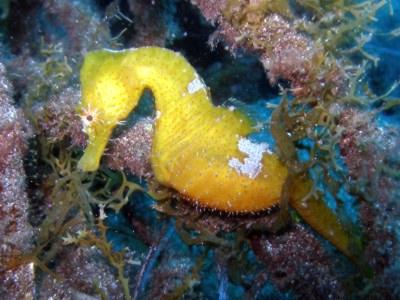
| Name | Seahorse : (Hippocampus hippocampus) |
| Status | interés para los ecosistemas canarios; International trade regulated under CITES II ;IUCN -insufficient data |
| Habitat | Sea floor with vegetation |
| Threats | Loss of habitat, historic trade in individuals |
| Encounters | Hard to find, and seem to change their locations frequently. There are certain locations such as El Cabrón, Sardinia and Taliarte where they are often seen, but they then often disappear for long periods as well. |
|
Catálogo Canario de
Especies Protegidas.IUCN reference page. The IUCN Red List of Threatened Species.
Version 2014.3. www.iucnredlist.org
Downloaded on 14 May 2015. |
Spiny Pufferfish
| Name | Spiny Pufferfish : (Chilomycterus atringa) |
| Status | interés para los ecosistemas canarios; ;IUCN -insufficient data |
| Habitat | Small caves, under big rocks |
| Threats | Loss of habitat, historic persecution by fishermen |
| Encounters | Principally nocturnal, they often seem to find a personal 'home' during the day and then are seen there for a period but can then move on to another location. At night they come out and start moving around in search of sea urchins, their major food. El Cabrón is probably the only place in Gran Canaria where these enormous fish can be seen with certainty, and in the last few years the population has grown steadily to about 8-10 individuals in 2018. They are now often seen on night dives as well. This individual ('Alpha') can be recognised by the severe bend in his back which makes his tail lower than his head. |
| Catálogo Canario de Especies Protegidas. |
If you found this interesting, have a look at Birds and Animals found underwater in Gran Canaria on our blog - 'Gran Canaria Diving hints and tips'.
NO Deposit, Cancellation or Change fees!

